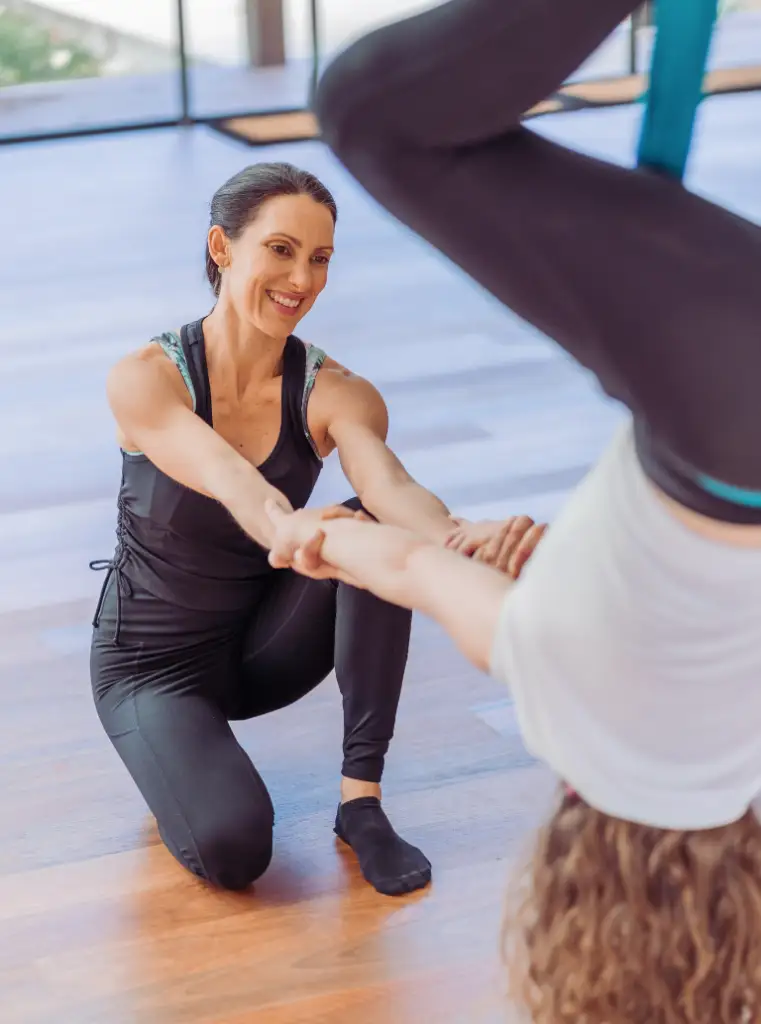Safety is of paramount importance in any therapeutic practice, and aerial yoga therapeutics is no exception. In order to provide a supportive and effective environment for clients, it is crucial to prioritize establishing safety and ensuring stability in all aspects—physical, physiological, and mental. By addressing safety concerns and fostering stability, aerial yoga therapists can create an atmosphere conducive to growth, healing, and progression in dynamic stability challenges. This blog post explores the key considerations and strategies for prioritizing safety and stability in aerial yoga therapeutics.
- Psychoeducation on Trauma and Its Impact: Understanding the effects of trauma is essential to address safety concerns. Providing psychoeducation about trauma and its impact helps clients gain insight into their responses and normalize their experiences. Educating them about the mind-body connection and how trauma can manifest physically, physiologically, and mentally creates awareness and reduces self-blame, fostering a sense of safety.
- Establishing a Safe and Supportive Environment: Creating a safe therapeutic environment is fundamental in aerial yoga therapeutics. Therapists establish trust, confidentiality, and respect by setting clear boundaries and actively listening to clients’ concerns. Validating their experiences and emotions creates a secure space where clients feel comfortable exploring and challenging themselves while maintaining a sense of safety.
- Grounding and Self-Regulation Techniques: Teaching grounding techniques is crucial in maintaining stability during aerial yoga therapy sessions. Grounding exercises help individuals stay present and connected to the here and now, allowing them to manage distressing or triggering emotions or memories. Sensory-focused techniques, deep breathing, and anchoring strategies can redirect attention and provide a sense of stability.
- Developing Coping Skills: Empowering clients with coping skills equips them to manage stress, anxiety, and triggers effectively. Aerial yoga therapists can provide a range of coping strategies, such as relaxation techniques, mindfulness practices, effective communication skills, and problem-solving strategies. These skills help clients regulate their emotions and navigate challenges with confidence, enhancing their overall safety and stability.
- Safety Planning: For clients at risk of self-harm or harm to others, safety planning becomes crucial. Collaboratively developing safety plans ensures that appropriate strategies and supports are in place to maintain physical and emotional well-being during difficult moments. Aerial yoga therapists can work alongside clients to identify triggers, establish emergency contacts, and create personalized safety plans, providing an added layer of security.
Establishing safety and ensuring stability are vital components of aerial yoga therapeutics. By addressing safety concerns and fostering stability in the physical, physiological, and mental aspects of clients’ well-being, therapists create an environment that supports growth, healing, and the progression of dynamic stability challenges. By integrating psychoeducation, creating a safe environment, teaching grounding techniques, developing coping skills, and implementing safety planning, aerial yoga therapists can prioritize safety while facilitating transformative experiences for their clients.




